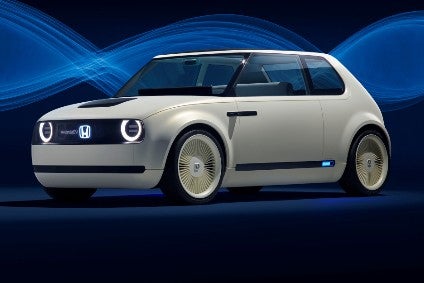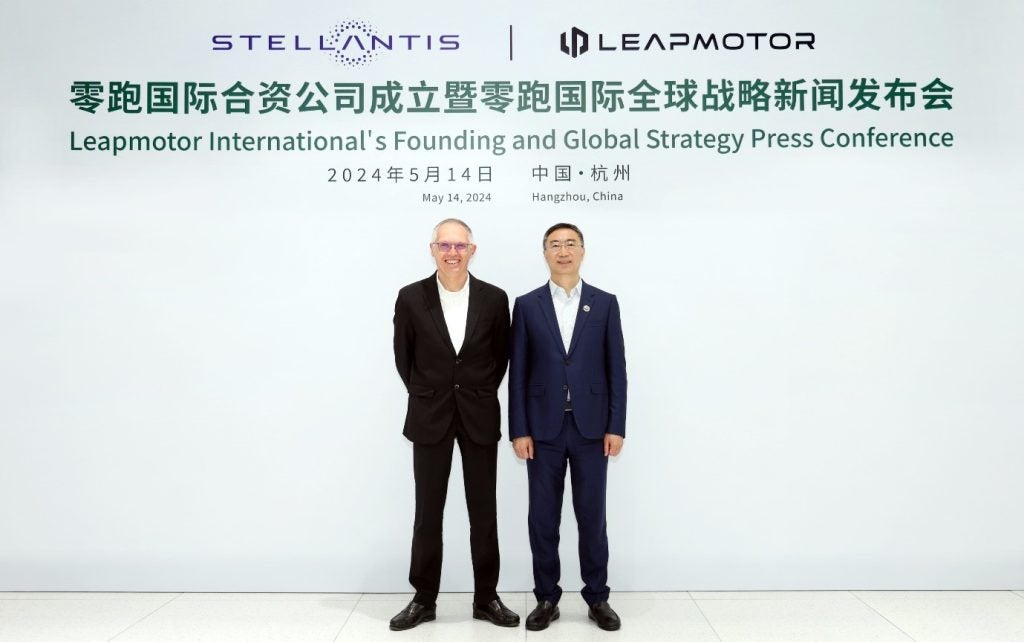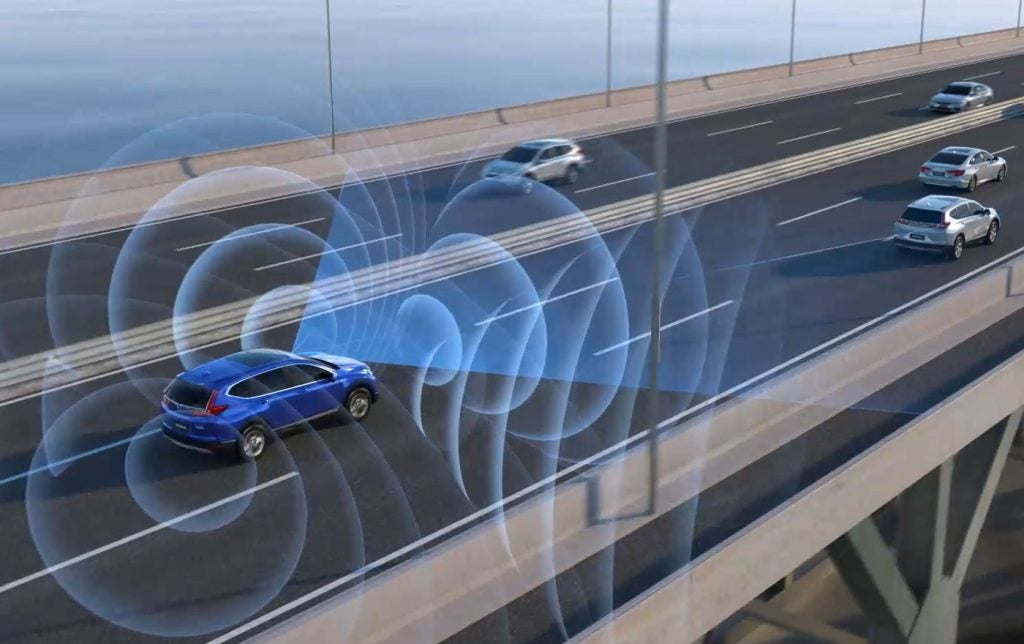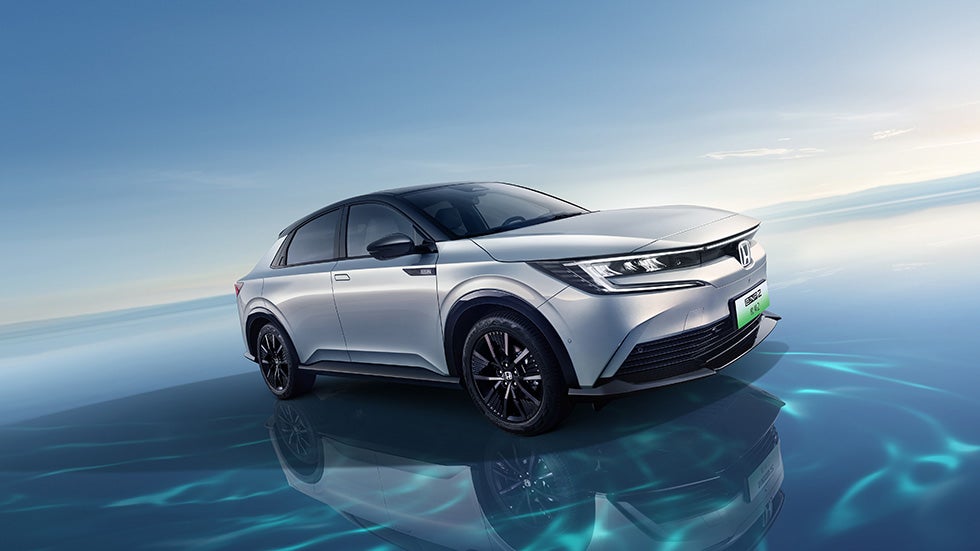
Concluding the three-part series, and after earlier chapters on Acura future vehicles and Honda’s plans for cars and SUVs, this final feature delves into what’s likely to be coming for Honda hybrids, PHEVs and electric models.
Hybrids & PHEVs
How well do you really know your competitors?
Access the most comprehensive Company Profiles on the market, powered by GlobalData. Save hours of research. Gain competitive edge.

Thank you!
Your download email will arrive shortly
Not ready to buy yet? Download a free sample
We are confident about the unique quality of our Company Profiles. However, we want you to make the most beneficial decision for your business, so we offer a free sample that you can download by submitting the below form
By GlobalDataThe second generation Fit Hybrid was launched in Japan, its first market, in September 2013. A 4WD variant was launched three months later. A facelifted range went on sale there in June.
The car is more powerful (100kW/182Nm from a 1.5-litre four-cylinder engine + one electric motor) yet also more economical than the second generation model (72kW/167Nm from its 1.3-litre+ electric motor powertrain). One other major mechanical change was the former CVT being replaced by a dual clutch transmission.
This was the first Honda model to be equipped with Intelligent Dual Clutch Drive (i-DCD), the company’s own lightweight and compact hybrid system for small-sized vehicles. Even though it has just the one electric motor, EV drive is possible. This takes place by disengaging the engine and motor.
Honda claims that by adopting an electric servo brake system which increases electrical regenerative efficiency and a fully-electric compressor that reduces engine load, the Sport Hybrid i-DCD improves the vehicle’s fuel economy by more than 35% compared to the IMA hybrid system in the second generation Fit Hybrid.
The Sport Hybrid i-DCD automatically changes to three driving modes by engaging and disengaging the engine and motor depending on driving situations. The three driving modes are EV Drive for motor only driving, Hybrid Drive for both engine and motor driving and Engine Drive Mode for engine only driving.
The next Fit Hybrid should appear first in Japan during the third quarter of 2019.
The Grace is another B segment model which can be, but isn’t exclusively a hybrid. It was discussed in this feature.
The Shuttle Hybrid, a small wagon which is mainly sold in Japan, is powered by a 1.5-litre Atkinson Cycle engine linked to a seven-speed DCT. This compares to the Shuttle, which has a 1.5-litre unit sending drive to either the front axle or else all four-wheels via a CVT. The Hybrid also offers the choice of FWD or AWD variants. It is due for replacement in the second quarter of 2020, which would mean a five-year life cycle.
Two other petrol-electric models sold almost exclusively in Japan are the Freed Hybrid and Freed+ Hybrid. These petrol-electric compact minivans were released there in September 2016. The Freed Hybrid is a seven-seater, whereas the Freed+ Hybrid has only two rows of seating. The latter replaced the Freed Spike Hybrid. Powering both cars is a 1.5-litre Atkinson cycle petrol engine, with the transmission a seven-speed DCT with integrated electric motor. Facelifts for both should be on sale in late 2019. Then, in the third quarter of 2023 should come the next generation models.
In the B segment for petrol-electric SUVs, Honda has the Vezel Hybrid. Japan is its main market. In common with the company’s other small models, its powertrain consists of a 1.5-litre engine and one electric motor. The Hybrid makes up the majority of the Vezel’s Japanese market sales. Intelligent Dual Clutch Drive (i-DCD), Honda’s lightweight and compact one-motor hybrid system for small-sized vehicles, as fitted to the Fit Hybrid, also features in the Vezel.
A facelift for the Vezel Hybrid should be released during the first or second quarters of 2018. The second general Vezel Hybrid is due for release in late 2020. Production will most likely be at Yorii-machi in Japan.
A Civic Hybrid is under development and this will use the same powertrain as features in the new CR-V Hybrid. It should be manufactured in China and Japan with sales possibly restricted to those markets. Production is due to commence in late 2018.
The first petrol-electric version of the CR-V had its world debut at April’s Shanghai motor show. The Dongfeng Honda joint venture then began building the CR-V Hybrid during August. For the moment, it has not been established if this model will be exported or whether it will also be manufactured in Japan and/or North America.
Honda Europe revealed its intentions to sell the CR-V Hybrid by displaying it at the Frankfurt IAA in September. Imports to the region will commence from the second half of 2018. It is unclear why there will be such a long delay between the car’s motor show premiere and it going on sale. Nor is the production plant known. It will likely be Sayama in Japan, although in October, Honda announced that it would be closing that factory at the end of March 2022. The company says it will consolidate operations at the nearby and much newer Yorii plant. Sayama, which opened in 1964, and Yorii (2013) are in Saitama prefecture just north of Tokyo.
The CR-V Hybrid is due to have some styling changes in mid-2019. The next generation model, scheduled for launch in 2022, should use use the same architecture, albeit updated.
There are also petrol-electric versions of the Step WGN Spada, an MPV which is sold mainly in Japan. A facelifted model was released in September and for the first time, the i-MMD two-motor hybrid system became available. The next Step WGN Spada Hybrid is due for release in 2021.
The Japanese market’s Odyssey Hybrid had its world premiere at October 2015’s Tokyo motor show. Honda also gave the existing Odyssey a mid-life facelift and this petrol-electric powertrain was introduced as part of that range. Unlike other Odyssey variants, the hybrids are available in front-wheel form only. They are powered by the combination of a 2.0-litre four-cylinder engine and one motor, and the only gearbox is a CVT. Both seven- and eight-seat layouts are available. The lithium-ion battery is positioned under the floor of the first row seats. The next Odyssey Hybrid should appear in 2019. There is no hybrid version of North America’s Odyssey, which is a different model.
The latest Accord Hybrid is new for North America’s 2018 model year. It is powered by the third generation of Honda’s two-motor hybrid powertrain. This is a 2.0-litre Atkinson Cycle engine with greater than 40 per cent thermal efficiency, the highest for any mass-produced Honda engine, paired with two motors. A more compact intelligent power unit (IPU), containing the hybrid battery pack and its control systems, is now mounted under the rear floor instead of in the boot. That means not only better cargo space (16.7 cu.-ft.) but the flexibility of a 60/40-split and folding rear seat.
Expect a facelifted car in 2020. The next Accord Hybrid will likely appear in 2022. There is a chance, however, that both it and the Accord PHEV could be replaced by an Accord Electric.
The Accord Plug-in Hybrid is part of the old-shape range, so it is due for replacement in 2018. The PHEV is powered by what had been Honda’s first two-motor hybrid system, and uses a 2.0-litre i-VTEC four-cylinder engine producing 137 horsepower, teamed with a 124kW motor. Electric driving is supported by a 6.7kWh lithium-ion battery, and total system output is 196 horsepower. The two-motor system allows the Accord PHEV powertrain to move seamlessly between all-electric EV Drive, petrol-electric Hybrid Drive, and direct Engine Drive.
Beyond its function as a full-electric vehicle, owners of the Accord PHEV are able to choose two additional driving modes to manage battery capacity and tailor the capabilities to their own commute. In its default upon start-up, the car is an EV and will continue to be until battery capacity necessitates the automatic switch to petrol/electric hybrid operation. At higher speeds or under high demand for acceleration, the combustion engine can kick in to provide additional power.
The plug-in Accord can be fully charged in under three hours using a standard 120V household electrical outlet, and in less than one hour using a 240V Level-2 charger.
American Honda discontinued imports of the Accord PHEV during 2014. This was due to minimal sales, with the car being phased out at the end North America’s 2014 model year. The replacement is due to be released in Japan at least, from 2018.
One size up from the Accord PHEV is the Clarity PHEV. One of the main reasons for its existence is an attempt to make the Clarity name better known. The platform underpinning the Clarity Fuel Cell is the basis for this model. It is a 50-state vehicle in American Honda’s lineup-up. The range on battery power is claimed by Honda to be up to 42 miles.
There is also a Clarity Electric. Both these models had their public debuts at the New York auto show in April.
The PHEV’s powertrain consists of a 1.5-litre Atkinson Cycle four-cylinder engine and one electric motor.
Honda would start selling the Clarity PHEV in Japan “in summer 2018” it announced in October.
Battery Electric – 15 minute charging by 2020
Honda has some ambitious plans for a future line-up of electric cars, with 15-minute recharging being one of them. The first vehicles are due out in 2022 and these should be able to run for as much as 240km on this quick charge. The next generation Clarity Electric will likely have this ability.
At the moment, Honda uses Panasonic for its hybrid and PHEV models’ batteries but is said to be talking to other Tier 1s for its fast-charge project. By 2020, the standard for such stations will have risen to 350kW in terms of maximum output, in both Europe and Japan. Honda sees this as key to the success of its next generation of EVs.
Honda staged the world debut of an EV prototype at the Frankfurt IAA in September. The Urban EV electric vehicle, a small hatchback with large circular headlights and which was 10cm shorter than the Jazz/Fit (see pic), will be sold in Europe and certain other regions from 2019. The car will become available in Japan during 2020, Honda CEO Takahiro Hachigo told the media at the Tokyo motor show in October. It will be manufactured in Honda’s home market too, Hachigo-san added.
A different model is said to be under development for China.
Honda is expected to source motors for this and other future EVs from a JV which was established with Hitachi Automotive Systems. This follows the July (2017) announcement that the firms are collaborating in the development, manufacture and sales of motors for electric vehicles, with the R&D operation based at the Tier 1’s facility in Hitachinaka-shi, Ibaraki Prefecture.
The Clarity Electric was announced by Honda in April 2016 as being part of a family of zero or low emissions vehicles. The Clarity Fuel Cell sedan’s architecture is the basis for not only this plug-in sedan but also a PHEV variant. Both the EV and the PHEV had their public debuts at the New York auto show in April 2017. The Electric has been criticised for not having as much range as other latest generation EVs such as the Nissan Leaf.
The Clarity Plug-in Hybrid was confirmed as being under development in January 2016. Honda markets it as the Clarity Plug-in Hybrid as a way of attempting to make the Clarity name better known. It is a 50-state vehicle in American Honda’s lineup-up and, like the Electric, it is new for the 2018 model year. The range on battery power is claimed to be up to 42 miles. The powertrain consists of a 1.5-litre Atkinson Cycle four-cylinder engine and one electric motor.
Honda would start selling the Clarity PHEV in Japan “in summer 2018” it announced in October 2017. Both the Electric and PHEV should be facelifted in 2019. Replacements are due out in 2021 or 2022.
Hydrogen
In July 2009, Honda stated that it intended to begin mass-production of a fuel cell vehicle in 2018. It then amended this date to 2015. In September 2012, the company said that 2015 was still the launch date for the third generation of its fuel cell vehicle, with the car to be available in the US, and Japan, followed by Europe. However, this was pushed back to March 2016 for Japan, some months later for Europe and then late 2016 for the US (California only to begin with). Japanese market sales commenced on schedule. Production of the Clarity Fuel Cell began at the rate of just two cars per day.
Honda reduced the size of the car’s fuel cell by a third compared to the stack in its previous and similarly sized hydrogen fuelled model, the FCX Clarity. This makes it around the same size as one of its 3.5-litre V6 petrol engines and means that it fits under the car’s bonnet, whereas the FCX Clarity’s centre console was also taken up by the fuel cell.
Speaking at the Japanese market sales launch of the Clarity in March 2016, Honda CEO Takahiro Hachigo told the media that he wanted to see tens of thousands of a future hydrogen powered Honda build annually. This would be part of the project to sell a car from 2020, the R&D of which is to be shared with General Motors. The fuel cell stack and hydrogen tanks are what the cars will have in common but the platforms, electric motors and battery packs will be bespoke to each OEM.
The Clarity Fuel Cell replacement is due in 2021. It will likely be the first vehicle to receive the stacks which GM and Honda announced in January 2017 would be made at a plant in Michigan from 2020. Groupe PSA is also now part of this joint venture.
Future model plan reports for other manufacturers can be viewed in the OEM product strategy summaries section of just-auto.com.
Future product program intelligence
Additional data on vehicle lifetime and future product plans, such as code names, production plants and expected annual build, are available in PLDB from QUBE.
The next OEM for just-auto’s in-depth examination of current and future models will be the Volkswagen Group.








